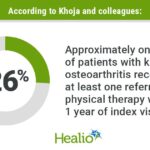
We know that our experiences in childhood can cast long shadows into our adult lives. It’s well-established that childhood trauma increases the risk for a range of poor physical and mental health outcomes later on (Hughes et al. 2017; Bellis et al. 2015; Farooq et al. 2025).
But what are the biological mechanisms that connect these early adversities to adult illness? One leading theory points to the body’s inflammatory response system. Chronic inflammation is implicated in everything from heart disease to depression, and some research suggests that childhood trauma can dysregulate this system, leaving it in a persistent state of high alert.
However, childhood isn’t a single, uniform block of time. A growing body of research is exploring whether there are specific ‘sensitive periods’ where adversity might have a particularly powerful impact. Does trauma experienced as a toddler have the same biological effect as trauma experienced as a teenager?
A new study by Murphy and colleagues (2025), using data from the well-regarded Avon Longitudinal Study of Parents and Children (ALSPAC), dives into this very question. They investigate whether the timing of childhood trauma is linked to specific patterns of inflammation in early adulthood.

A child’s development has distinct stages, much like the growth rings of a tree. A new study asks if trauma during these different stages leaves a different biological mark.
Methods
The researchers drew their data from the ALSPAC cohort, a large UK-based study that has followed thousands of individuals since birth in the early 1990s. This prospective design is a major strength, as it doesn’t rely on adults trying to recall events from many years ago.
The study included 3,272 participants. Trauma exposure (including abuse, neglect, domestic violence, and bullying) was measured throughout childhood and categorised into three developmental stages:
- Early childhood (0-4.9 years)
- Middle childhood (5-10.9 years)
- Late childhood (11-17 years)
At age 24, blood samples were taken to measure three key inflammatory markers:
- C-Reactive Protein (CRP),
- Interleukin-6 (IL-6), and
- A novel marker of chronic inflammation called soluble urokinase plasminogen activator receptor (suPAR).
The analysis, which adjusted for potential confounders like sex, ethnicity, and socio-economic status (SES), explored how trauma at each stage was linked to these markers.
Results
The study produced two sets of key findings, one looking at the inflammatory markers individually and another looking at them in combination.
When looking at each marker alone, the results pointed towards late childhood (ages 11-17) as a particularly sensitive period.
- Trauma during this stage was significantly associated with higher levels of all three inflammatory markers (suPAR, CRP, and IL-6) at age 24.
- Crucially, the link between late childhood trauma and elevated suPAR was the most robust finding. It remained statistically significant even after the researchers accounted for any trauma experienced earlier in life.
- In contrast, trauma in early or middle childhood showed little to no independent association with these individual markers.
The researchers then used a statistical technique called Latent Profile Analysis (LPA) to see if participants clustered into groups based on their inflammatory patterns. They identified three distinct profiles:
- No inflammatory dysregulation (80% of the sample): Normal-to-low levels of all three markers.
- Elevated CRP and IL-6 (18% of the sample): Higher levels of the two traditional markers, but normal suPAR.
- A high inflammatory group (<5% of the sample): Elevated levels of suPAR, CRP, and IL-6.

Trauma at any childhood stage raises the risk of high inflammation in adulthood, with late childhood (ages 11-17) identified as a particularly sensitive period.
Conclusions
Late childhood (ages 11-17) appears to be a key developmental window where trauma is most strongly associated with long-term inflammatory dysregulation, particularly involving the chronic marker suPAR. The authors conclude:
Collectively, the findings… are complementary in highlighting the propensity of late childhood trauma (rather than early or mid-childhood trauma) for the dysregulation of suPAR in early adulthood.
They further suggest that including suPAR alongside traditional markers like CRP and IL-6 is crucial for getting a clearer picture of the biological consequences of childhood trauma.

Late childhood is as a critical window for long-term immune disruption, with suPAR offering unique insight into chronic inflammation and the lasting biological imprint of trauma.
Strengths and limitations
This is a methodologically strong study with several key strengths. Using the prospective ALSPAC cohort minimises recall bias, and the assessment of trauma over distinct developmental periods allows for a nuanced analysis. The inclusion of suPAR, a more stable marker of chronic inflammation, is a significant advancement on studies that only use acute markers like CRP, which constantly fluctuates.
However, there are limitations to consider:
- Like many studies in this area, it is challenged by confounding from socio-economic status (SES). While the authors adjusted for SES, it’s an incredibly complex factor that’s difficult to fully control for. Disadvantage can influence both the likelihood of experiencing trauma and the risk of inflammation through pathways like diet, chronic stress, and access to healthcare.
- The study sample was predominantly of White ethnic background (96.3%), which means the findings may not apply to more diverse populations where experiences of trauma and biological responses may differ.
- The trauma measure was a simple ‘yes/no’ for any exposure in a given period. It didn’t capture important details like the type, severity, or frequency of the trauma, all of which could have a differential impact.
- Finally, inflammation was only measured at a single point in time (age 24). This gives us a valuable snapshot, but not the full movie of how inflammation develops over the years following trauma.

The study is methodologically strong and advances inflammation research with its use of the more stable marker, suPAR. But its findings are restricted by key design and demographic limitations.
Implications for practice
These findings could have important implications for how we think about and target support for young people. If late childhood and adolescence is indeed a ‘window of vulnerability’, it underscores the critical need for robust, accessible mental health support in secondary schools and communities.
This evidence strengthens the biological case for trauma-informed care within Child and Adolescent Mental Health Service (CAMHS), schools, and youth services. Clinicians working with adolescents who have experienced trauma should be aware that these young people may be at higher risk for long-term physical health problems, not just mental health difficulties.
From a research perspective, the study highlights the value of the marker suPAR. Why suPAR? Because it reflects chronic, low-grade inflammation rather than a temporary spike common in other inflammatory markers. Its stability makes it a potentially more reliable signal of long-term immune dysregulation. This study paves the way for future research to explore whether this specific ‘high-inflammation’ profile (high suPAR, CRP, and IL-6) can predict who is most at risk of developing specific conditions like depression, psychosis, or cardiovascular disease down the line. Perhaps one day, such profiles could even help guide personalised prevention and treatment.

Adolescence is a critical period where support and intervention after trauma could have long-lasting benefits for both mental and physical health.
Statement of interests
None to declare.
Links
Primary paper
Murphy, J., Healy, C., Mongan, D., Susai, S. R., Cannon, M., & Cotter, D. R. (2025). Developmental stage of childhood trauma exposure and markers of inflammation at age 24. Brain, Behavior, and Immunity, 126, 225-234. https://doi.org/10.1016/j.bbi.2025.02.020
Other references
Bellis, M.A., Hughes, K., Leckenby, N., Hardcastle, K.A., Perkins, C. and Lowey, H. 2015. Measuring mortality and the burden of adult disease associated with adverse childhood experiences in England: a national survey. Journal of Public Health 37(3), pp. 445–454. Available at: https://dx.doi.org/10.1093/pubmed/fdu065
Farooq, B., Russell, A.E., Allen, K., Howe, L.D. and Mars, B. 2025. The association between longitudinal patterns of adverse childhood experiences, and self-harm and depression in adolescence and early adulthood: findings from the Avon longitudinal study of parents and children. European Child and Adolescent Psychiatry, pp. 1–13. Available at: https://link.springer.com/article/10.1007/s00787-025-02781-y [Accessed: 28 September 2025].
Hughes, K. et al. 2017. The effect of multiple adverse childhood experiences on health: a systematic review and meta-analysis. The Lancet Public Health 2(8), pp. e356–e366. Available at: https://www.thelancet.com/action/showFullText?pii=S2468266717301184 [Accessed: 28 September 2025].
Photo credits









